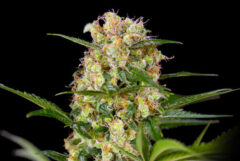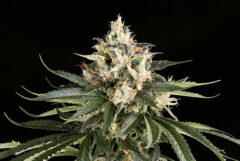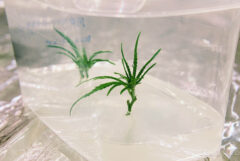This time, we’re exploring our time with Critical Runtz Feminized. This 70% indica combines several legendary strains (Northern Lights #2, Jeck Hereer, Durban Poison, and Skunk Kush) into a single package. We were genuinely amazed by how lanky this plant grew which presented a few challenges along the way. In the end, though, the payoff was worth the effort.
Total growing time: 94 days
Flowering time: 73 days
Final height: 128 cm
Final yield: 118 grams
THC content: 18.6%
To grow our Critical Runtz Feminized cannabis plant, we kept our grow space at a constant 25°C during the day, allowed the temperature to drop to 21°C at night, and maintained a relative humidity of 65% during early vegetation. Our plant itself was grown in an 8-litre plastic pot filled with BAC Lava Mix under a 1000 W Phillips GreenPower HPS light on an 18-hours-on-6-hours-off schedule.
Germination & seedling
As with any grow, the first step is to germinate our seed. For best results, we can only endorse the so-called “paper towel method as it’s the fastest, easiest, and most reliable technique out there. Simply fold up a few paper towels, put them on top of a plate, and sprinkle some water on them until they’re damp but not soaked.
Next, place any seeds onto the paper towels, making sure to leave a couple of centimetres between each seed. Cover the seeds with another damp paper towel and place the whole setup into an open plastic bag. Put that somewhere warm and check it after 24 hours, and then every 12 hours until you see the seed crack open and the thin white taproot emerge.
After about a day, our seed had germinated and we placed it into a pre-soaked Rockwool cube (taproot down) under a 600 W LED lamp. Fresh seedlings are extremely fragile and too much light, heat, or water too soon can prevent them from properly sprouting. On day three, we watered our seedling with 100 ml of clean, pH-balanced water (pH 6.2; EC 0.8) mixed with a small dose of rooting hormone.
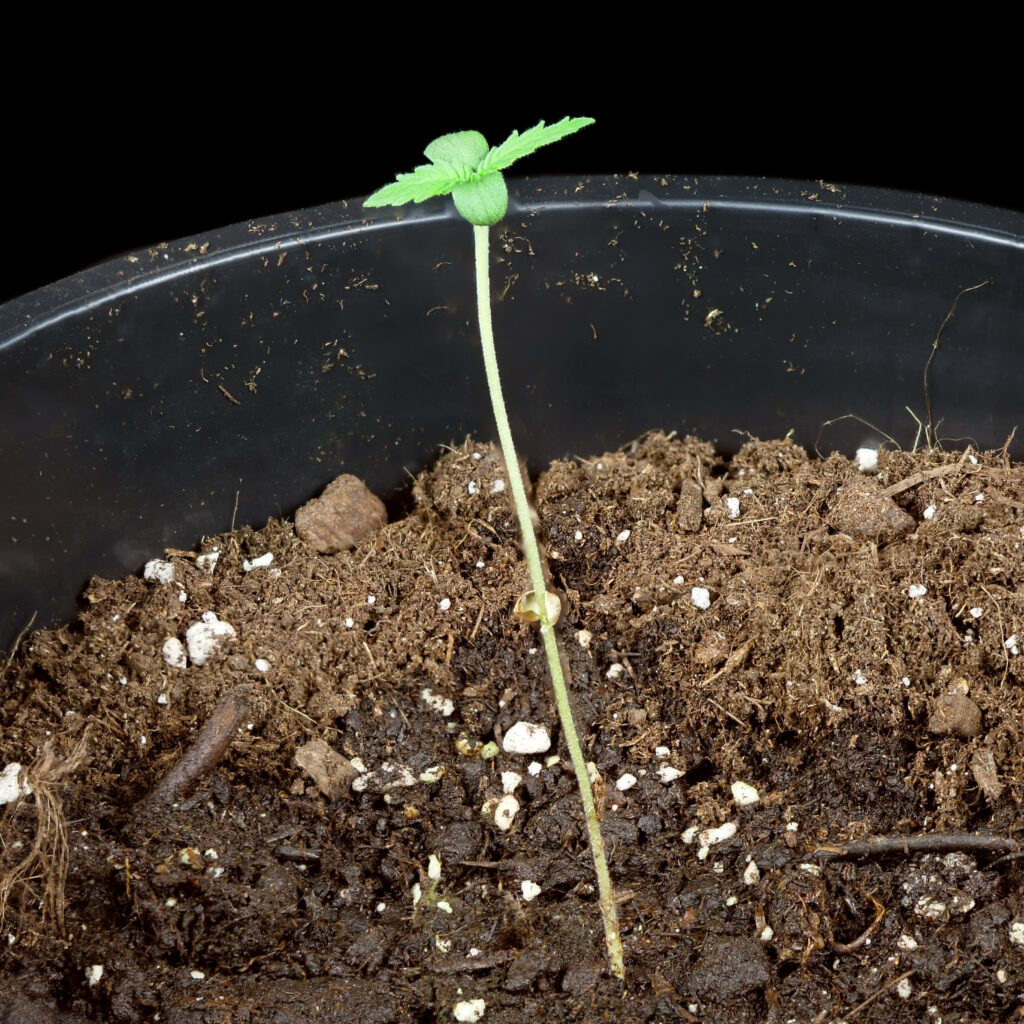
At the end of week one, our seedling was standing 8 cm tall with small—but healthy—cotyledons and two pre-leaves. The roots were now growing out of the bottom of our Rockwool cube and we moved our plant to an 8-litre plastic pot and placed it under our 1000 W light.
Vegetation
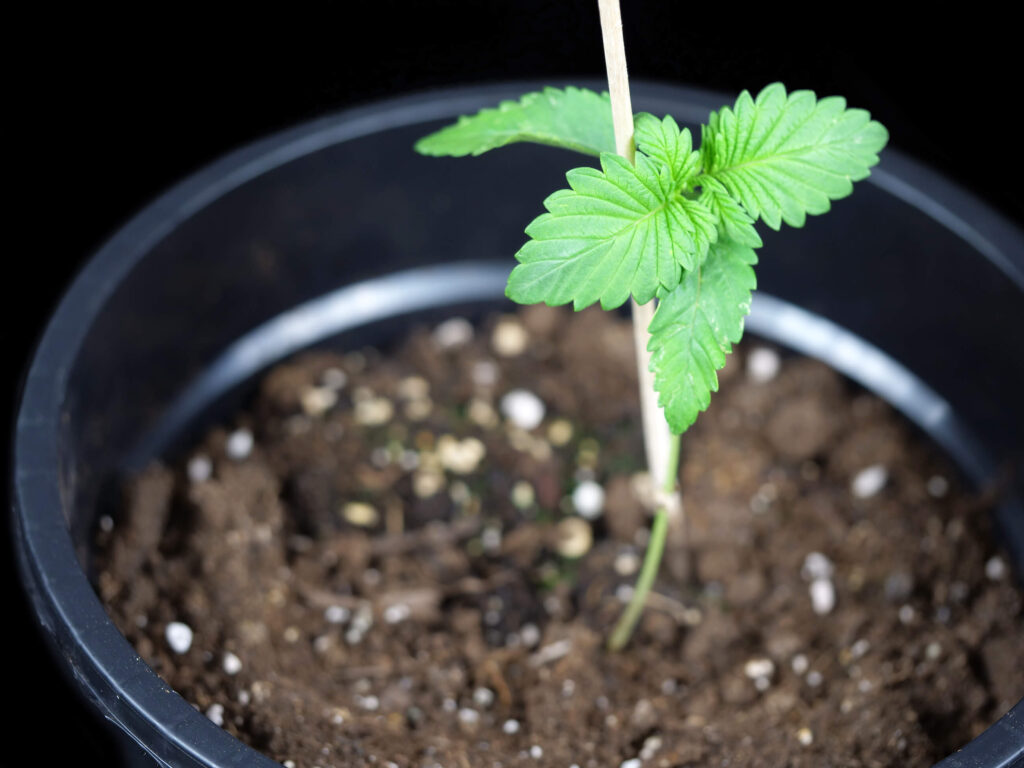
As we entered week two, we began daily feedings with 200 ml of water (pH 6.0; EC 1.4) mixed with Bio Grow liquid nutrients. Over the week, our plant more than tripled in height to reach 28 cm. While this was accompanied by minor vegetative growth, the plant was becoming a bit too tall too quickly and required additional support. This was only needed for a few days (for now) but shows how rapidly Critical Runts can develop.
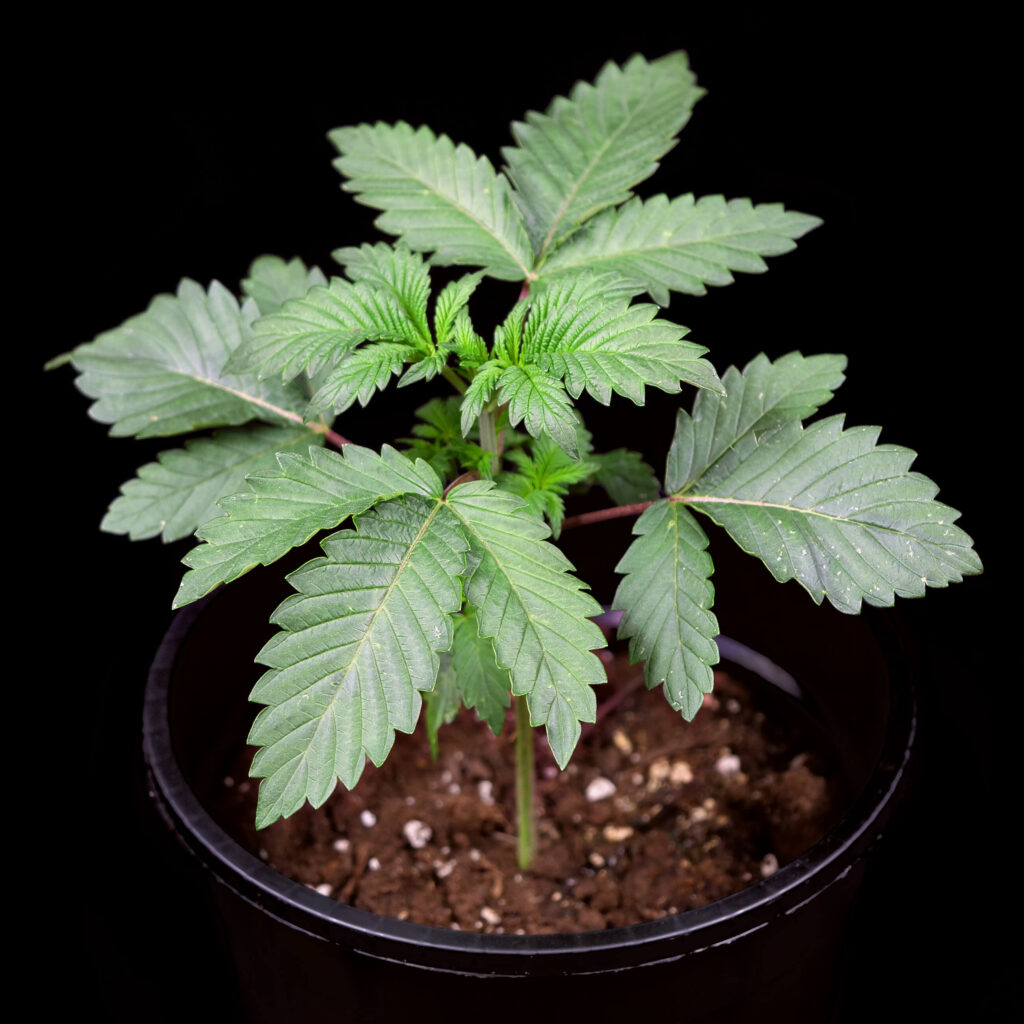
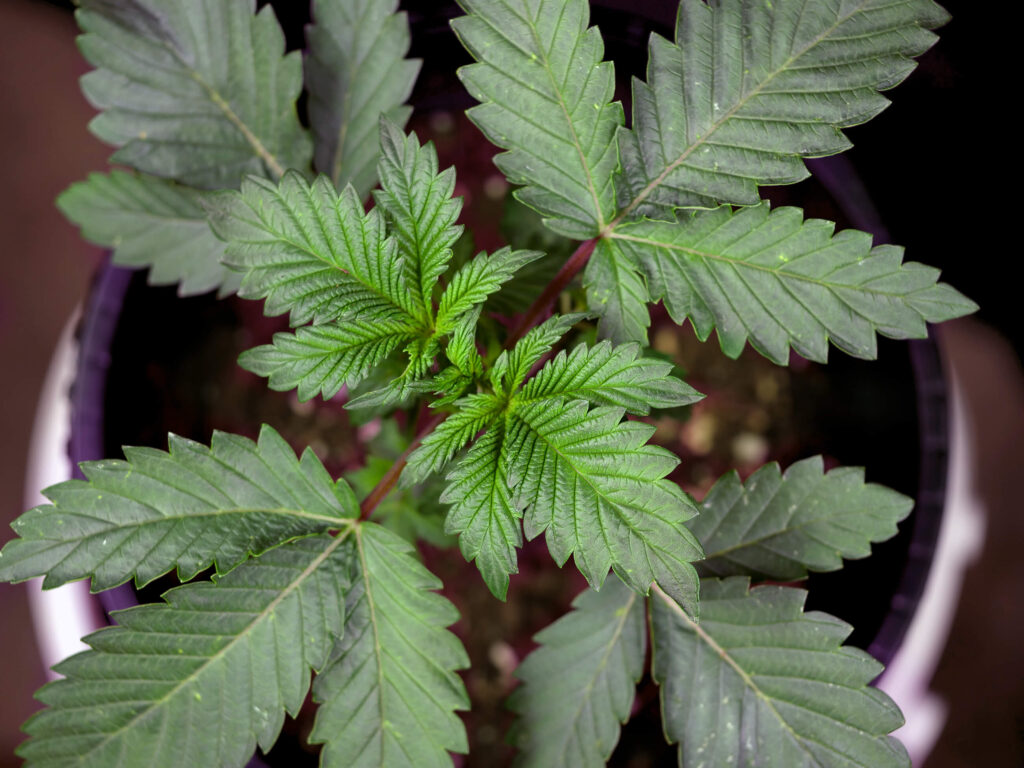
In week three, our plant shot up to 46 cm and sprouted multiple sets of short, broad leaves. The internodal spacing was somewhat tight, though a bit more stretched out than one might expect from a 70% indica. To help keep up with this rapid growth, we doubled the daily watering to 400 ml.
Before switching to flowering, we took the time to hang small satchels of Neoseiulus californicus and Amblyseius swirskii from the plant’s lowest branches. These little white pouches contain hundreds of tiny creatures which live symbiotically with cannabis plants and won’t cause any harm to our Critical Runtz while they hunt down pests like spider mites and thrips which can destroy even the healthiest of plants. We replace these every four weeks to maintain a fresh supply.
Flowering
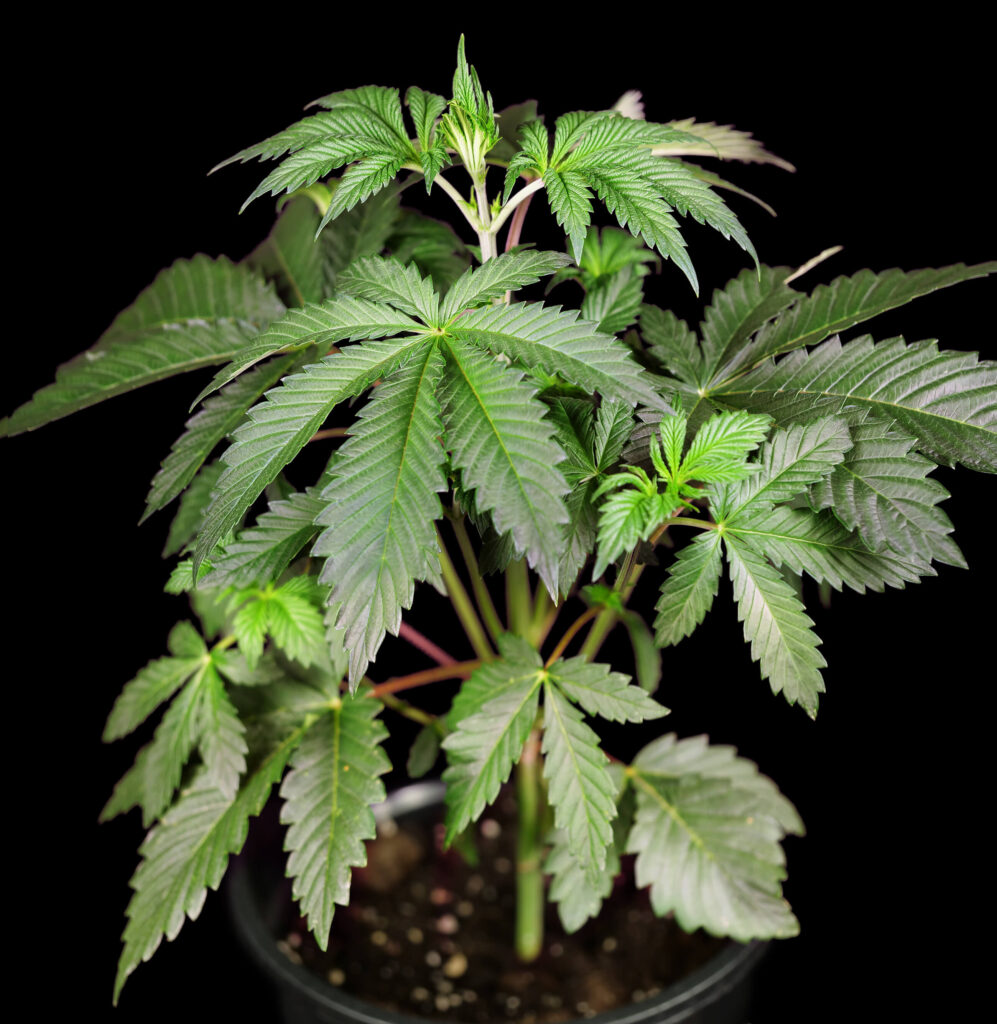
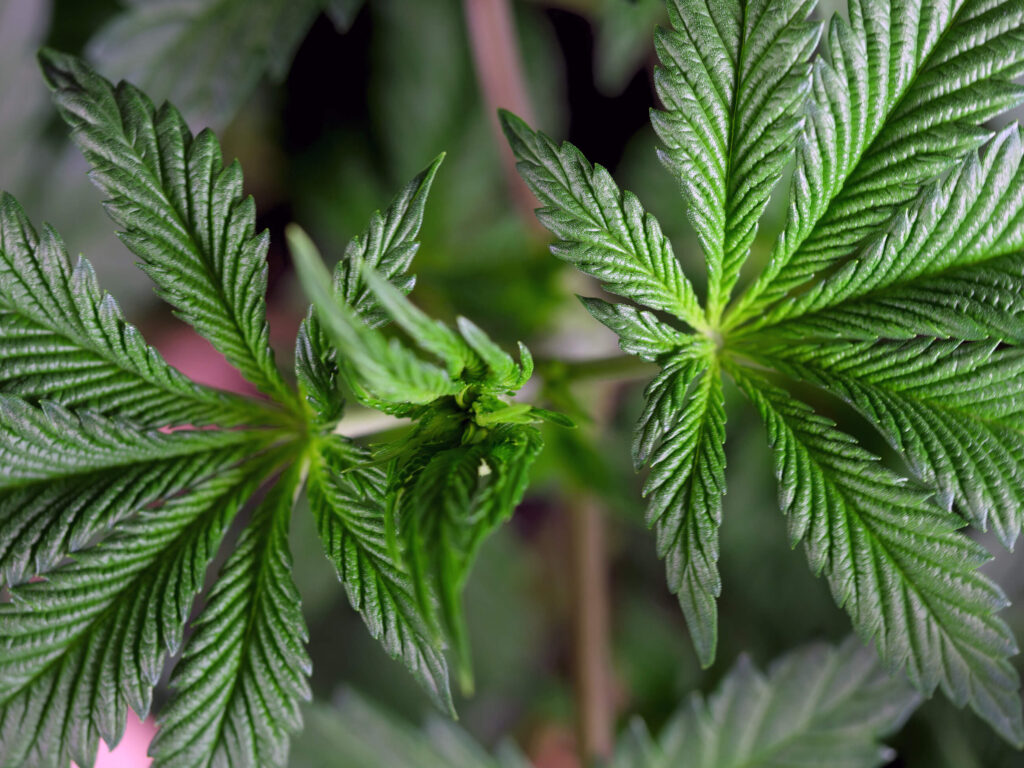
At the start of week four, we switched our Critical Runtz Feminized plant over to flowering by flipping our lights to a 12/12 schedule. Additionally, we increased the volume of water to 800 ml (pH 6.2; EC 1.8) and switched to Bio Flower liquid nutrients. By the end of the week, our plant was standing 67 cm tall with the lateral branches stretching out considerably. This strain might only be 30% sativa but you’d never know it by the way it was growing.
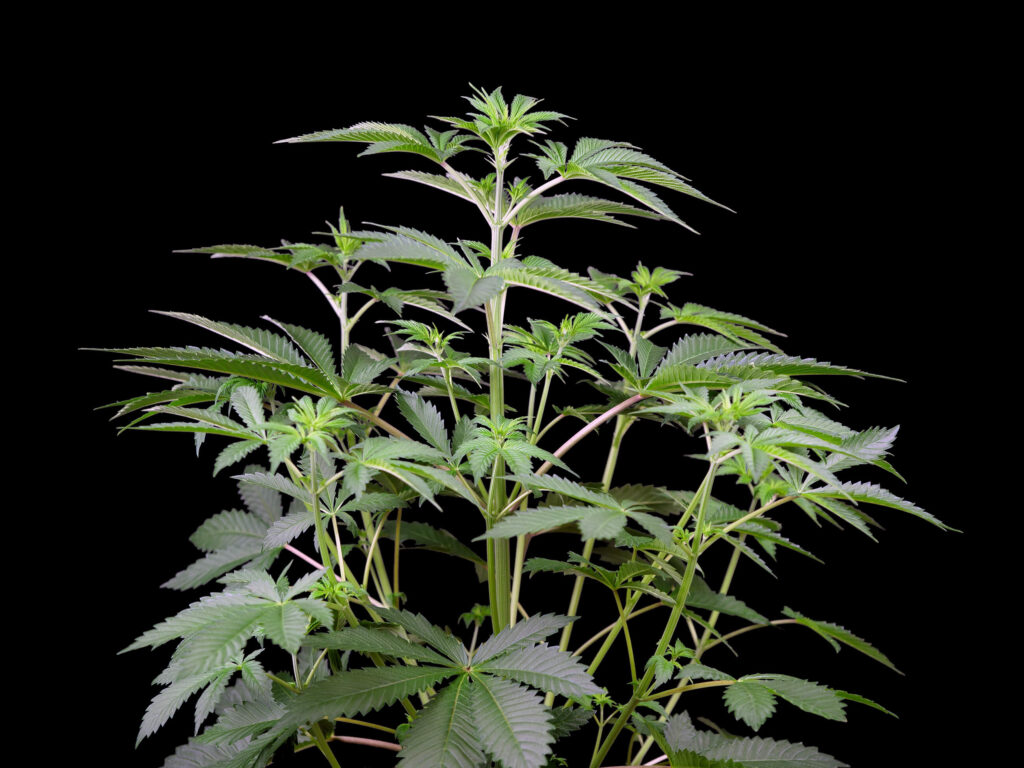
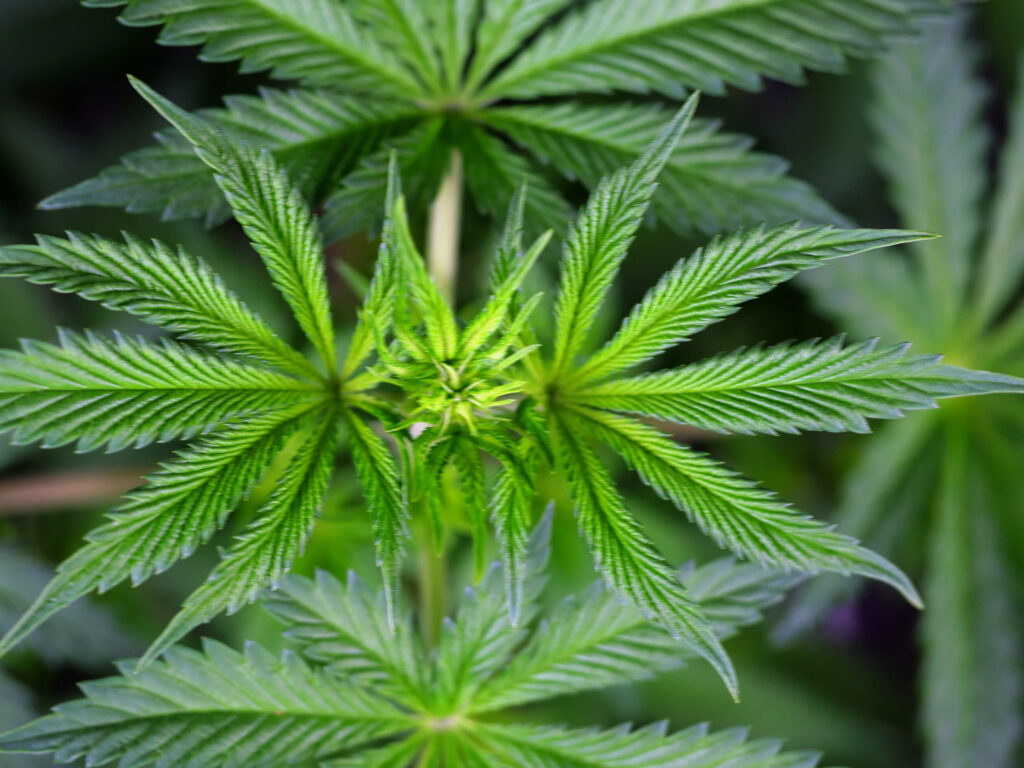
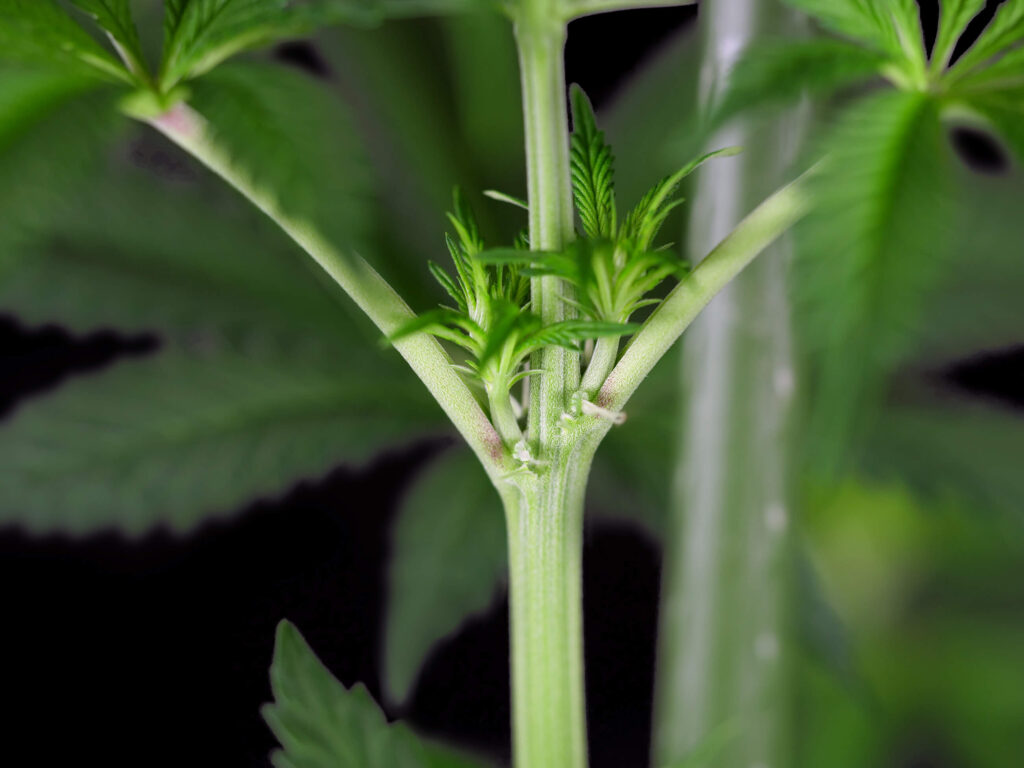
In week five, our plant slowed down a bit gaining only 6 cm to reach 73 cm tall. This was accompanied by truly massive growth of the lateral branches which were now very nearly as tall as the main stem. Everything about this plant was tall and lanky and the internodal spacing was only growing each day. With the plant set to begin blooming any time now, we upped our daily feedings to 1000 ml and lowered the relative humidity to 60%.
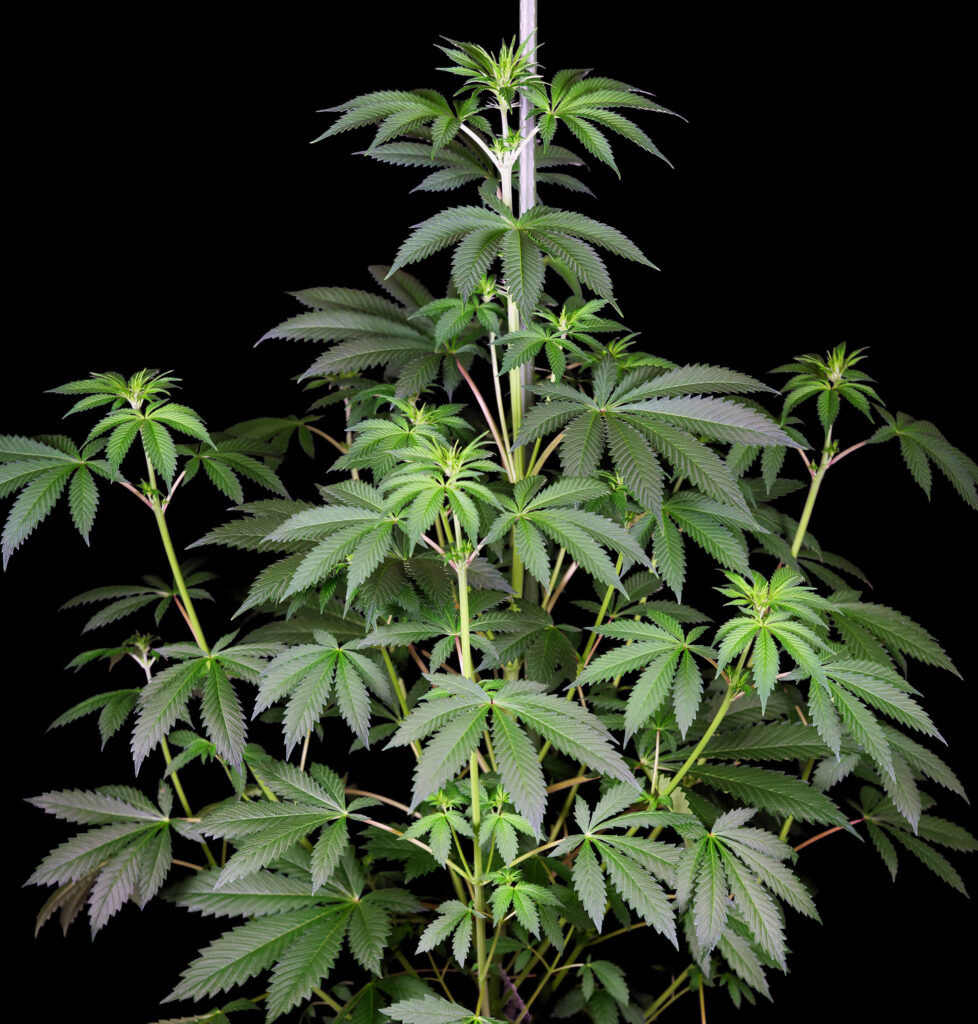
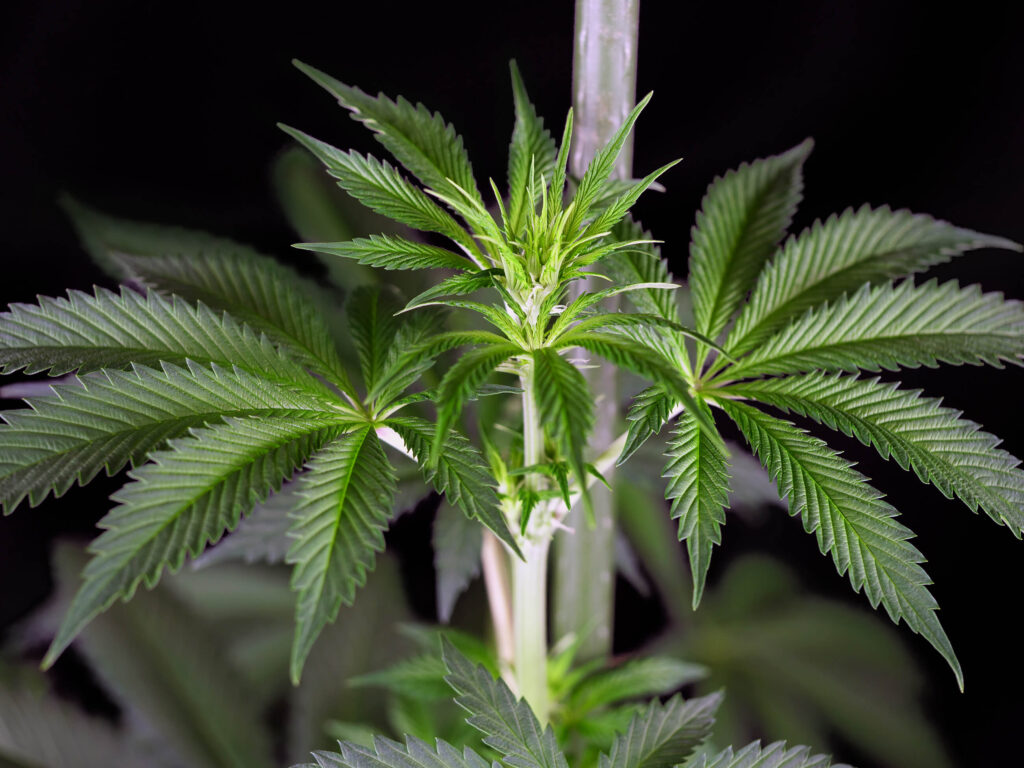
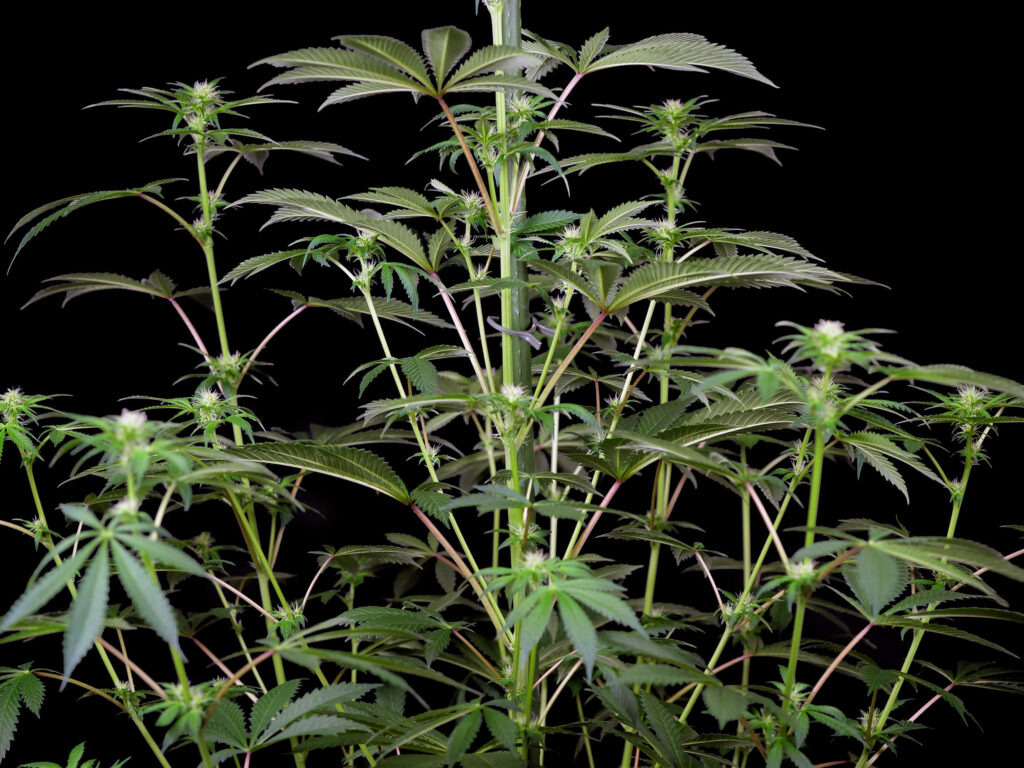
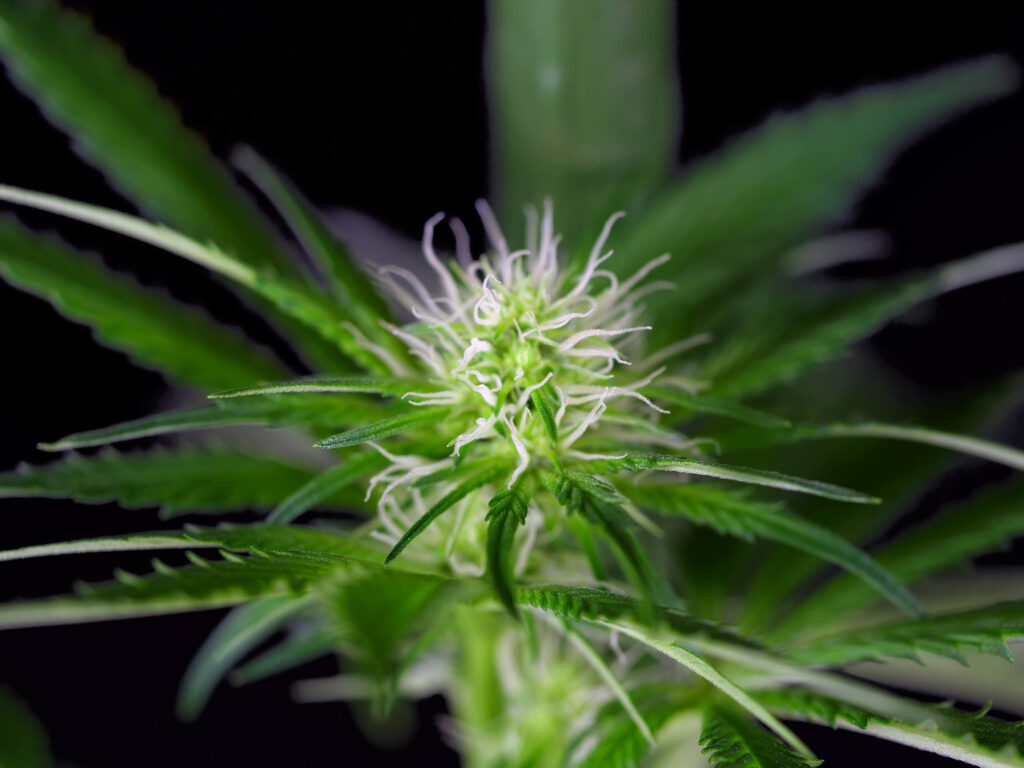
Week six saw the single largest growth spurt as our plant shot up to 95 cm with both the main stem and the branches growing considerably. We still weren’t seeing any signs of flowering, but that was about to change. To make sure that our plant had everything it would need, we increased daily feedings to 1500 ml of water.
In week seven, our plant slowed down a bit and grew to 106 cm. Once again, the main stalk was beginning to tilt a bit and required new support rods. By the end of the week, we were finally seeing the first signs of flowering as small white pistils began to grow in at the plant’s inner nodes and the tops of branches.
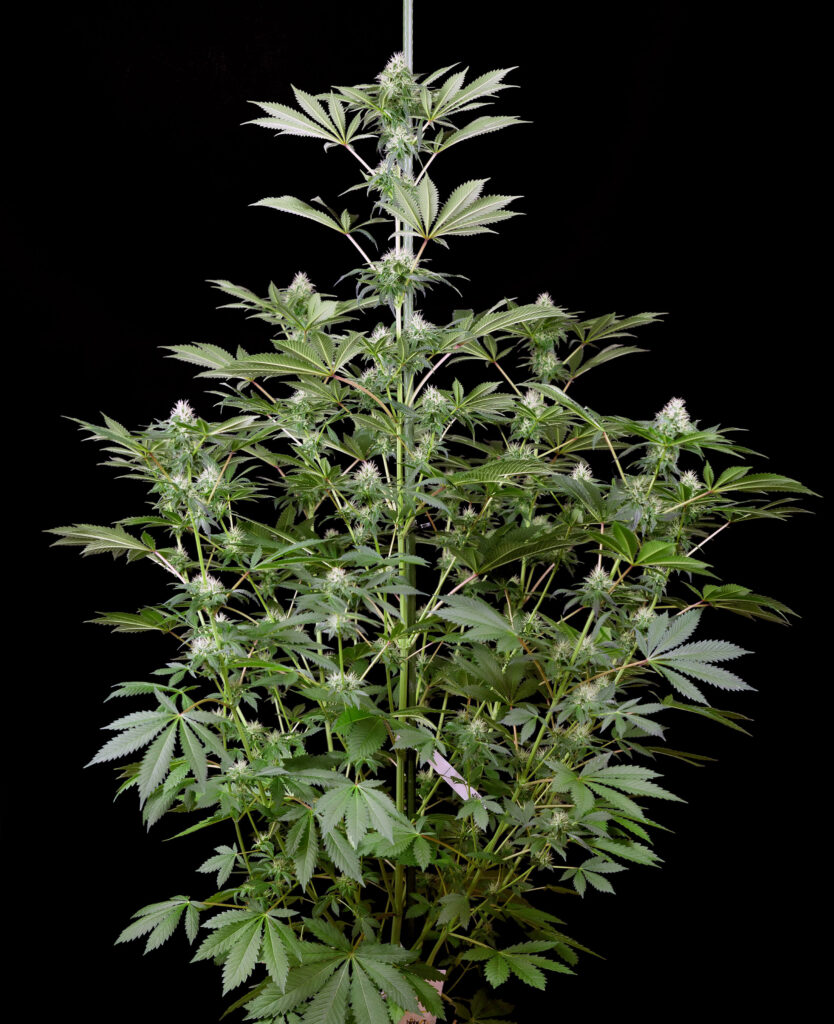
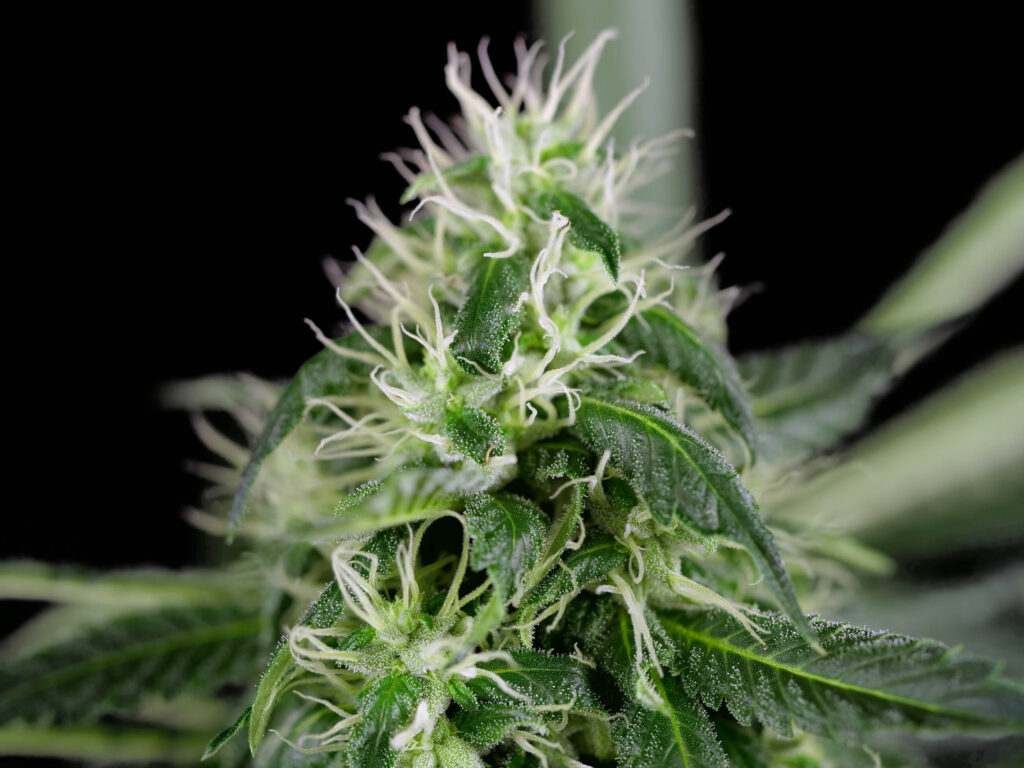
Weeks eight saw our plant’s last major growth spurt as it stretched another 14 cm to reach a height of 120 cm. By the end of this week, small clumps of white hairs had appeared all over our plant and things were starting to get a little out of control. The main stalk had grown well above the lower canopy, but the branches—like the rest of the plant—were massive and lanky.
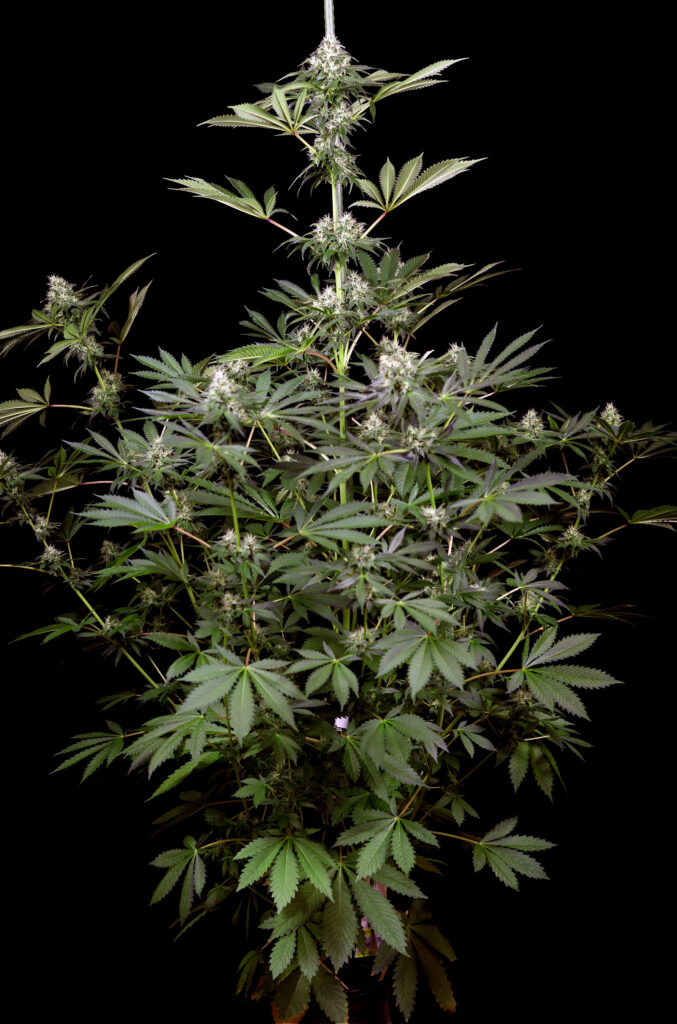
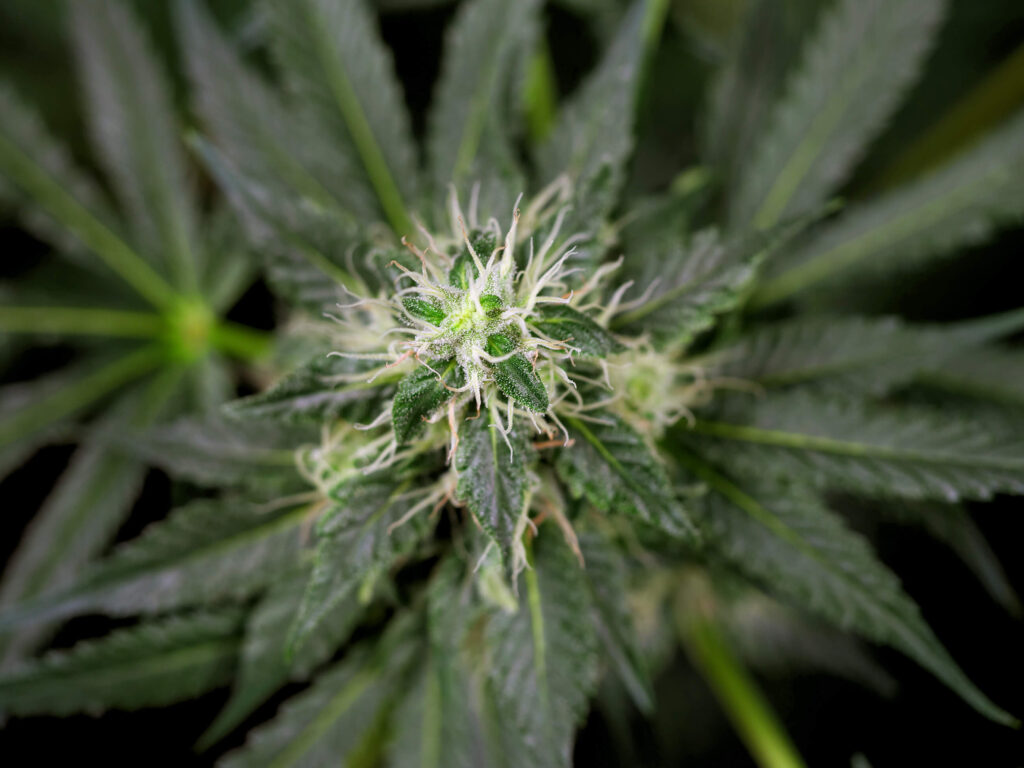
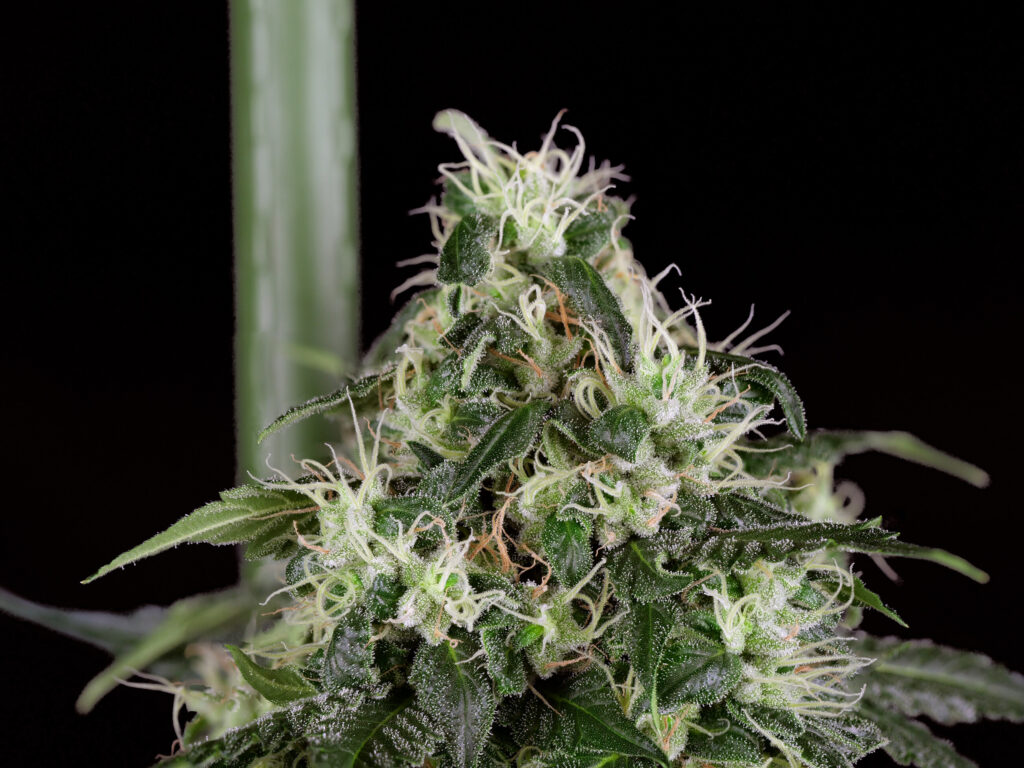
Weeks nine and ten saw our plant hit 123 cm as the main cola continued to develop. The buds were growing larger every day and there was little left to do but wait for nature to run its course over the next few weeks. In fact, the flowers on the lateral branches were becoming so heavy that we needed to add several extra support rods to keep them standing. By now, some of the lower fan leaves were beginning to turn yellow and we were seeing the very first pistils turning a dark orange.
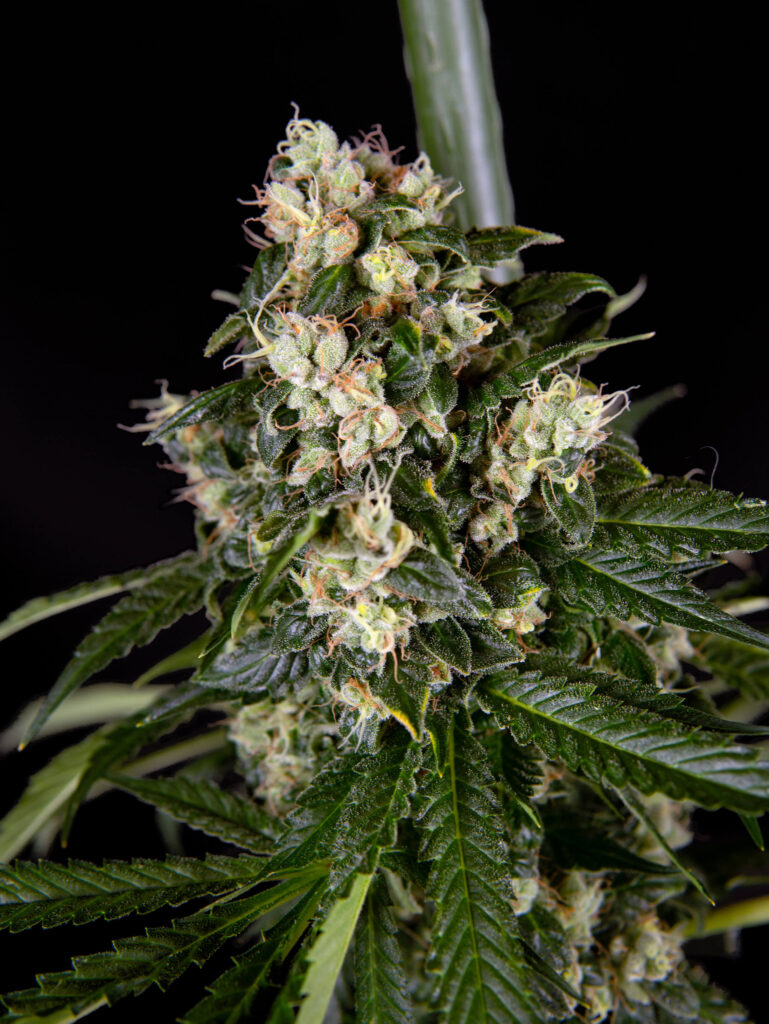
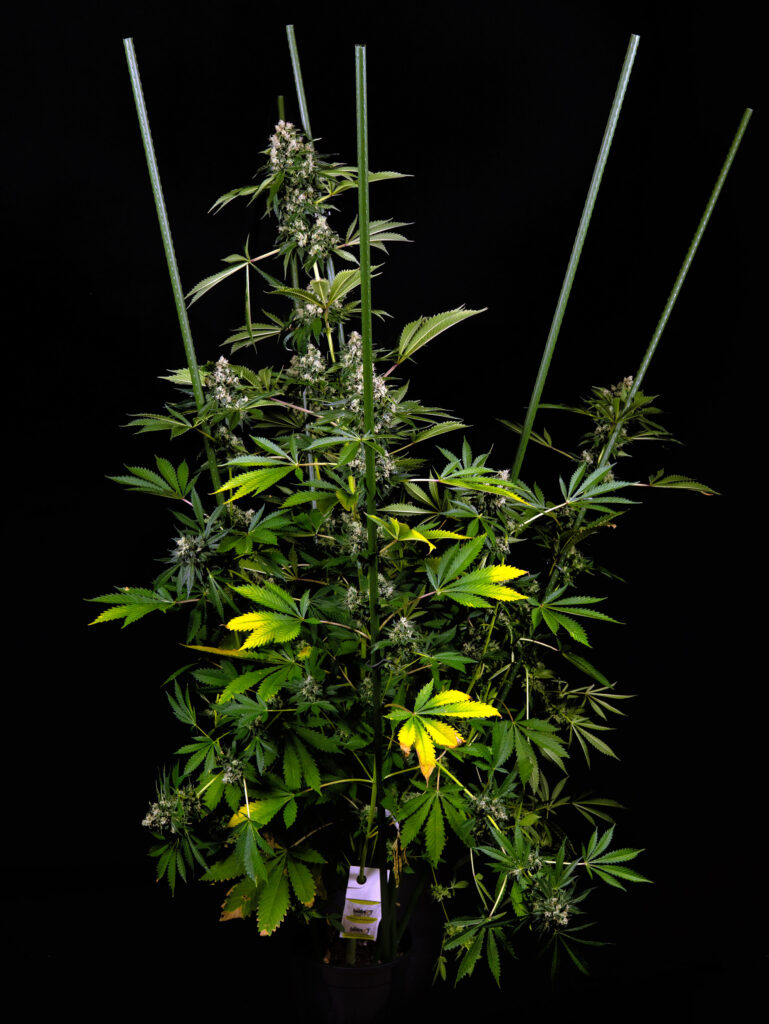
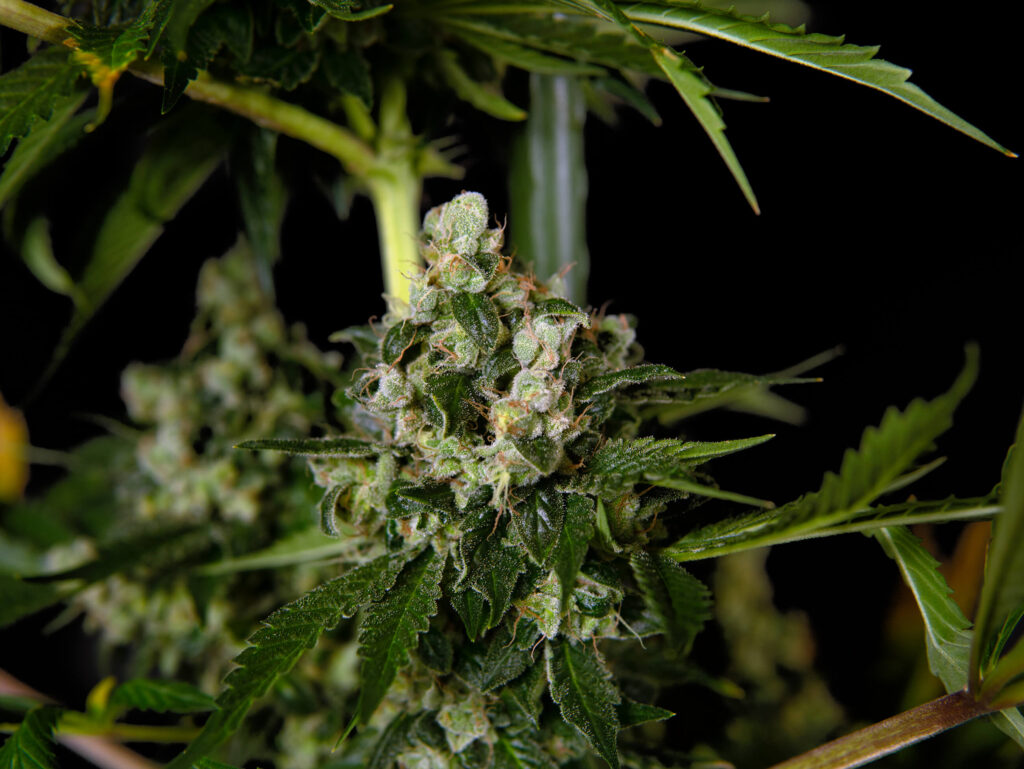
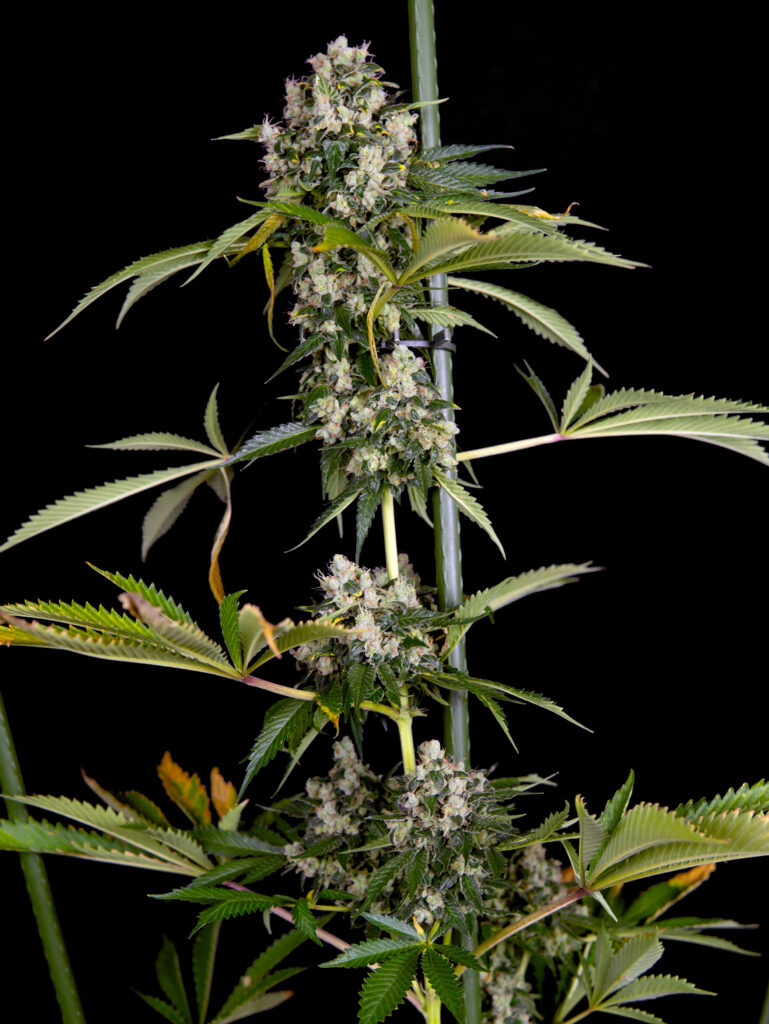
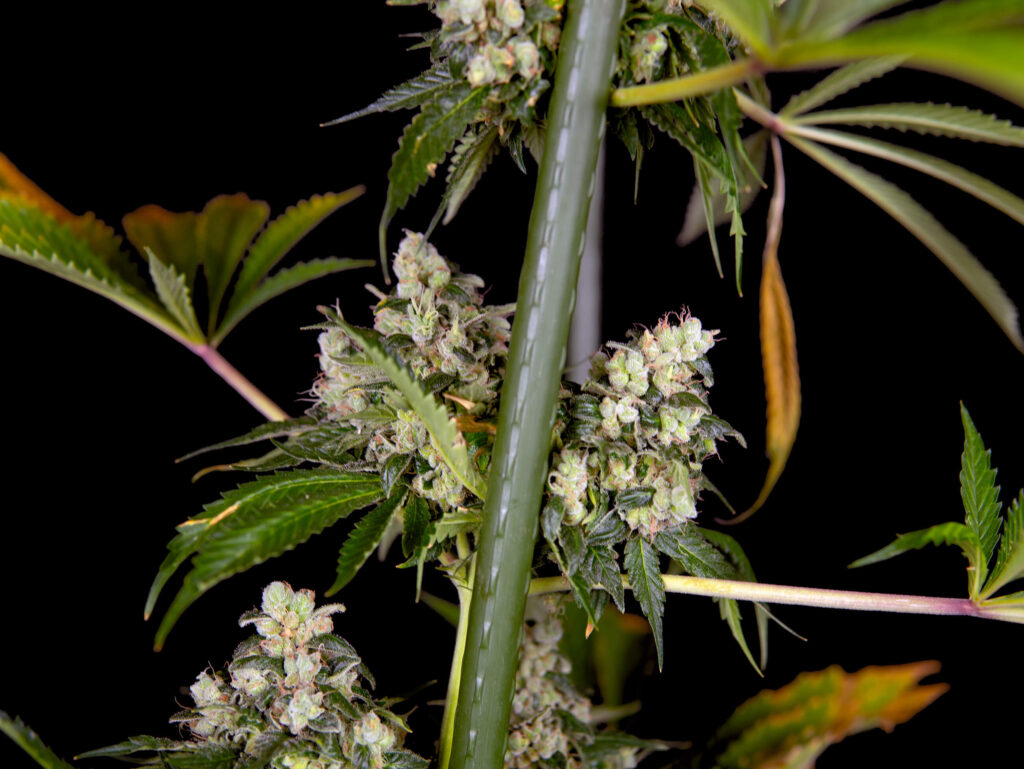
Over weeks eleven and twelve,our plant grew to its final height of 128 cm and the buds continued to ripen. More and more leaves turned yellow and the pistils were almost completely orange.
Finally, in week fourteen, we harvested our Critical Runtz Feminized cannabis plant.
Harvest
To harvest our Critical Runtz Feminized plant, we started by cutting it down at the base and removing all of the fan leaves. Next, we hung it upside-down in a climate-controlled drying room with a constant temperature of 15.5°C and a relative humidity of 50%. The plant was left hanging until the smaller branches were dry enough to snap when bent; typically this takes 10-20 days.
Once the plant had dried, we removed the buds and trimmed away any remaining leaves. The buds weren’t terribly leafy, but the plant’s very long lateral branches and stretched-out internodal spacing meant that we had a lot of smaller buds to trim up as opposed to a handful of larger colas. Tedious, but not too difficult.
The trimmed buds were then placed into glass jars for curing. Initially, each jar was left open for 24 hours to allow the majority of any remaining moisture to evaporate. Next, the jars were sealed and placed somewhere cool and dark and then “burped” several times a day for an hour at a time. The frequency was slowly reduced to once per day until the desired consistency was reached. On average, this process takes anywhere from 4-6 weeks.
All in all, we were able to harvest a respectable 118 grams of dried flower with a THC content of 18.6%.
Terpene profile
While growing, the smell from our Critical Runtz Feminized plant was mild, though noticeable. Hints of pungent fruitiness combined with fresh flowers to create a pleasant aroma whenever we entered the space. Once dried, those same smells came out in full force with a fresh citrus smell taking centre stage. Underneath that, hints of spicy hashish and sandalwood combined with a subtle sourness to create a mouthwatering scent. The flavours are largely in line with the smell with a candy-like sweetness working with the citrus notes to bring out the best in both.
The effects of Critical Runtz are rather well-balanced overall. Initially, you’re hit with a burst of creative energy and cerebral euphoria from the strain’s sativa lineage. Gradually, though, these fade away into a much more indica-like deep body stone. This strain is ideal for gradually unwinding at the end of a party or for enjoying a movie before bedtime.
The outcome
Critical Runtz Feminized is a bit of an odd duck. As a 70% indica hybrid, this strain exhibits an incredibly sativa-like growth pattern and a balanced high. Indoor growers may struggle to contain the explosive growth of this strain but techniques like scrogging or mainlining can be extremely helpful. If you’re short on space, it’s best to only grow one of these at a time as this strain is a real space invader. However, the results were more than worth the hassle.
- Disclaimer:Laws and regulations regarding cannabis cultivation differ from country to country. Sensi Seeds therefore strongly advises you to check your local laws and regulations. Do not act in conflict with the law.







